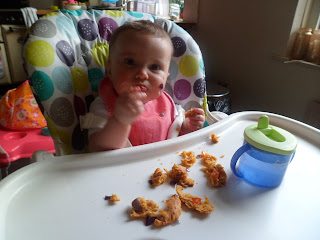I like to use fresh herbs rather than jars of dried herbs in my cooking, the flavour you get is a lot better. However, buying fresh herbs every time you need them can be expensive and wasteful unless you're green fingered and can grow your own. I'm not, I've tried but I always end up with shriveled brown clumps apart from with mint which just takes over and you can't it stop growing. Instead I buy bags of fresh herbs and freeze them, you rarely need the full bag for any recipe and herbs defrost super quick if you run them under cold water, meaning that I always have a stock of herbs in to flavour a meal at a moments notice.
Ingredients
- 1 Chicken breast fillet
- 4 Mushrooms
- 75g Kale
- 1 Clove of garlic
- 1 sprig of Rosemary
- 200g Soft Cheese
- 300g Spaghetti
Method
- Preheat oven to 200C.
- Slice the mushrooms and dice the chicken breast and garlic. Place in a lidded oven proof dish along with the rosemary. Bake in the oven for 15 minutes.
- Put the spaghetti on to cook, this should be brought to the boil and then simmered for 20 minutes.
- After baking for 15 minutes remove the oven proof dish from the oven and add the kale. Return to the oven with the lid on for a further 10 minutes.
- Drain the spaghetti, then in a large bowl mix in the soft cheese, add the contents of the oven proof dish including the juice and stir into the cheesy spaghetti.







